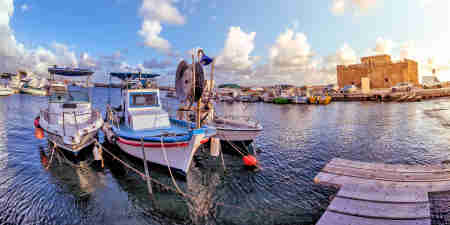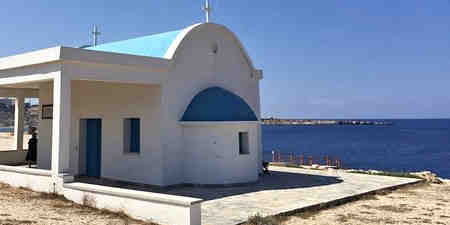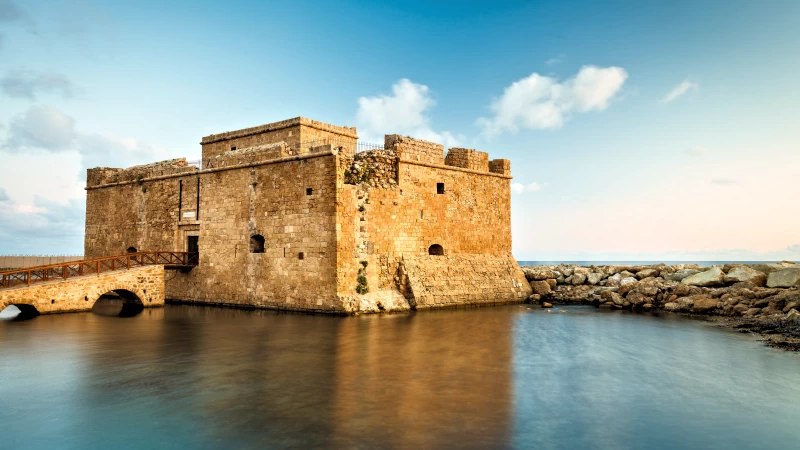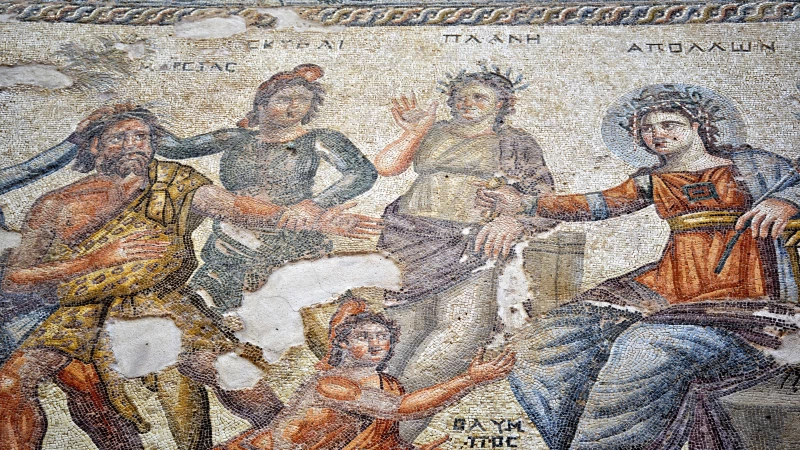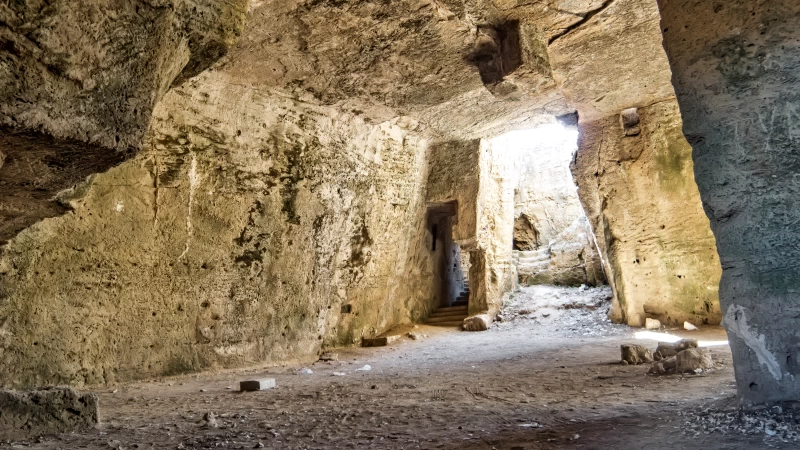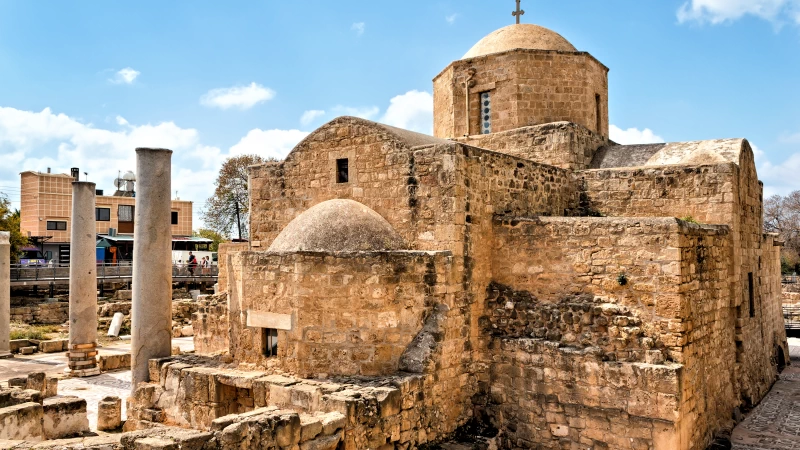Tombs of the Kings
This magnificent underground necropolis is a UNESCO World Heritage Site since 1980. Recognized for exceptional historical value, the Tombs of the Kings (Tafoi ton Vasileon) are the final resting place of Ptolemaic aristocrats and officials who lived in Paphos from the 3rd century BC to the 3rd century AD.
Entombing many great Ptolemaic men, the Tombs of the Kings are a Paphos must-see.
The rock-cut subterranean peristyle graves at the Tafoi ton Vasileon site were never used for royalty. Instead, some 100 Ptolemaic aristocrats and officials were buried here with great pomp. It is believed that the architecture of the Tombs of the Kings was inspired by the Hellenistic necropolises of Alexandria, Delos, Pergamon, and Priene.
Set some two kilometers northwest of the Paphos Harbor overlooking the Coral Bay beach, the Tombs of the Kings are hardly visible from afar. But a sense of sacred and mystery envelops the visitor who steps down among the 12 intact Doric columns that support the peristyle courtyard of Tomb 5 to see what’s left of the necropolis that served as a burial ground for wealthy officials and aristocrats during the Hellenistic period of Cyprus. In Tomb 7, the bones of a rider and his horse entombed together are kept under glass. From the other significant graves of the site, Tomb 4 is the best preserved.
The burial ground was not used just by Ptolemaic aristocrats. There’s evidence that early Christians used the Tombs of the Kings to lay to rest their departed too. Later, in Medieval times, squatters used some of the chambers as housing or workspaces: there’s evidence of a pottery workshop in Tomb 3.
Looted and vandalized for hundreds of years, the necropolis has maintained its sense of pious reverie and can be visited by the public every day, throughout the entire year. At 2.50 €, the admission fee is quite a bargain.
The Tombs of the Kings are a working archaeological site. They have been excavated since 1977, and they are managed and investigated by the Department of Antiquities of the Republic of Cyprus.
Read More
Read Less


